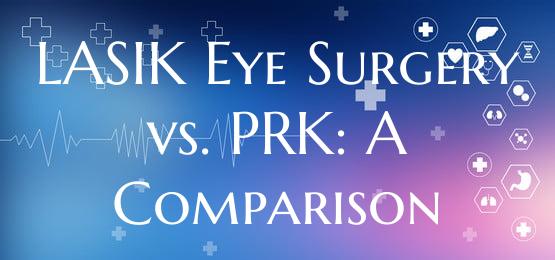
LASIK Eye Surgery vs. PRK: A Comparison
Introduction: When it comes to vision correction, LASIK (Laser-Assisted In Situ Keratomileusis) and PRK (Photorefractive Keratectomy) are two popular procedures that have helped millions of people achieve clearer vision without the need for glasses or contact lenses. Both LASIK and PRK are considered safe and effective treatments for various vision problems, but they differ in their techniques and recovery periods. In this article, we will compare LASIK and PRK to help you better understand the differences and similarities between these two vision correction procedures.
Procedure: LASIK: LASIK is a type of refractive surgery that involves creating a thin flap on the cornea and reshaping the underlying tissue using a laser. The flap is then repositioned, allowing for rapid healing and minimal discomfort. LASIK is known for its quick recovery time and immediate improvement in vision.
PRK: PRK is another type of refractive surgery that does not involve creating a flap. Instead, the outer layer of the cornea is removed before reshaping the underlying tissue with a laser. This results in a longer recovery time compared to LASIK, as the outer layer of the cornea needs time to regenerate.
Suitability: LASIK: LASIK is suitable for individuals with mild to moderate refractive errors, including nearsightedness, farsightedness, and astigmatism. It is not recommended for people with thin or irregular corneas.
PRK: PRK is a better option for individuals with thin corneas or those who may not be suitable candidates for LASIK due to various factors. PRK is also preferred for individuals involved in contact sports or activities that may increase the risk of eye trauma.
Recovery: LASIK: The recovery time for LASIK is typically quick, with many patients experiencing improved vision within a day or two. Most patients can resume normal activities within a few days after the procedure.
PRK: The recovery period for PRK is longer compared to LASIK, as the outer layer of the cornea needs time to heal and regenerate. It may take a few days to a couple of weeks for vision to stabilize, and full visual acuity may take several weeks to months to achieve.
Conclusion: LASIK and PRK are both effective options for vision correction, with each procedure having its own set of benefits and considerations. The choice between LASIK and PRK will depend on various factors, including the individual's eye health, lifestyle, and preferences. It is essential to consult with a qualified eye care professional to determine the most suitable treatment option for your specific needs.